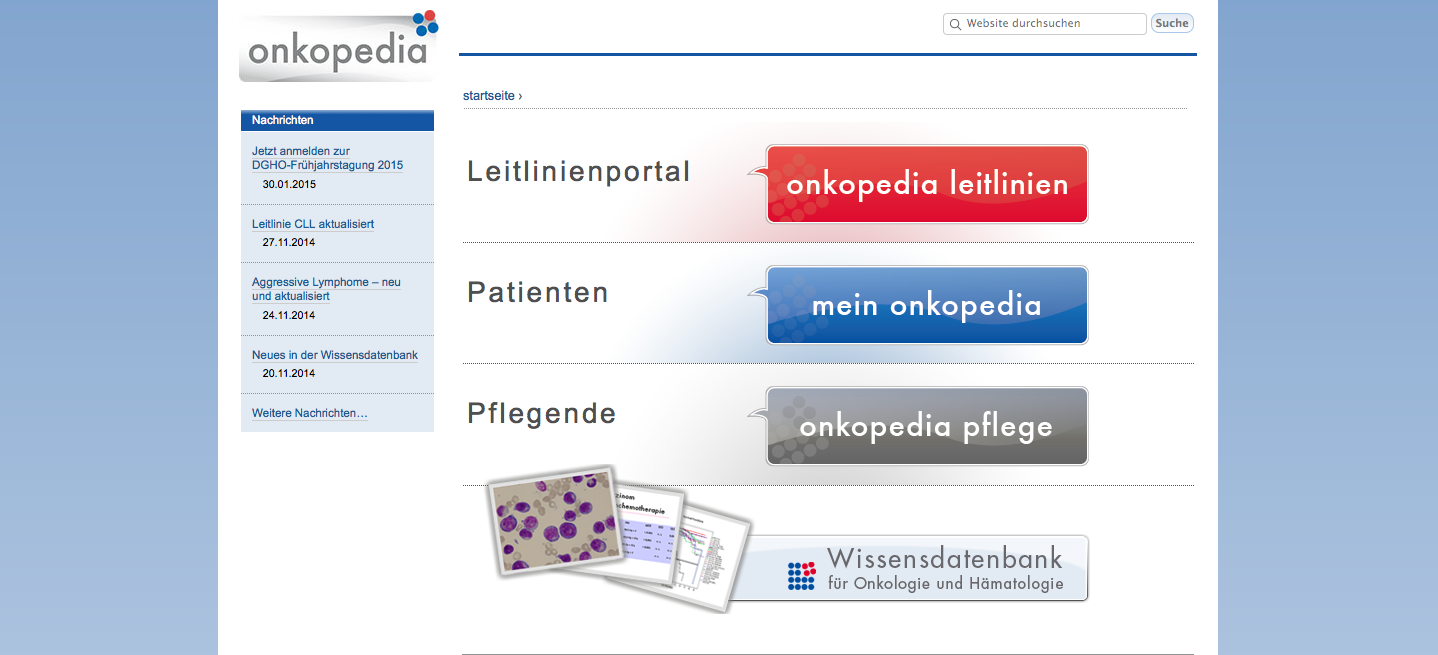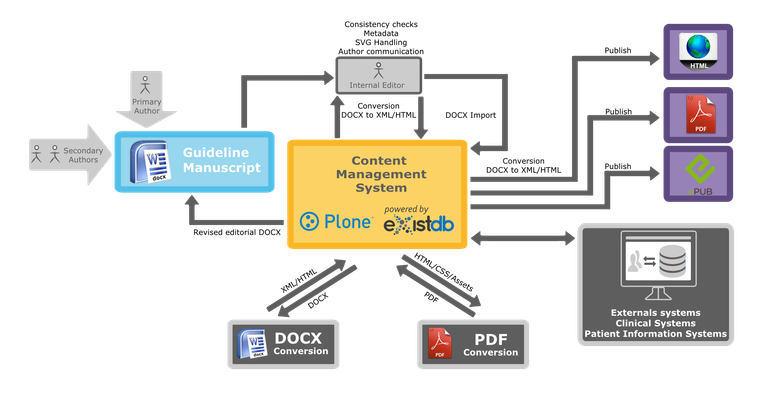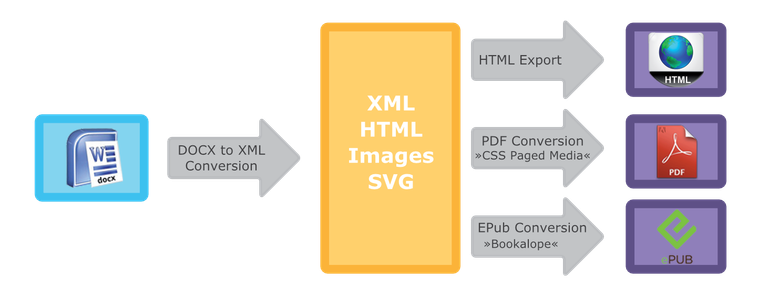Onkopedia
The Deutsche Gesellschaft für Hämatologie und medizinische Onkologie (DGHO) e.V., known in English as the German Society for Haematology and Medical Oncology, is a medical association whose goals include training and educating doctors and medical personnel, and drafting and publishing medical guidelines. Its members include scientists and doctors specialising in the research, diagnosis and treatment of blood diseases and malignant tumours.
Together with other medical societies and associations from Germany, Austria and Switzerland, the DGHO operates the online guidelines portal “Onkopedia.” In addition to providing medical guidelines, it’s a source of specialist information for patients and care givers.
Challenge
Automate and extend their editorial workflow
The number of documents to be published on the portal eventually surpassed available manpower. To cope with the volume of work, the DGHO wanted to automate their editorial workflow. They wanted to be able to feed content into 3rd party systems (e.g. hospital IT systems) via standardised interfaces, which they would use to open new channels of distribution.
Solution
Store data as XML and change to a XML editorial workflow
For the authors, the new XML-based editorial workflow brought very little change: they simply use a new Word template to create content. The new template automatically validates document structures, references, and more.
Converting Word (.docx) files to XML allows round-trip capability, which means content can be converted from .docx to XML and back, as often as desired. Authors can access already-posted content as a Word document and revise it at any time. The conversion also generates:
- HTML for viewing the document on the website
- A PDF document*
*The new PDF converter meets all the demands placed on modern, high-quality PDFs: tables, multi-column layouts, hyphenation, complex graphical layouts, etc.
The new Onkopedia site supplies information in a semantically correct, structured form. All content is easily embedded in external systems. Since the information is stored in an XML database, it’s accessible to external systems, resulting in an open and flexible system.
Publications are also linked with other information, like study results, certifications, protocols, and other types of content, so users can get the most up-to-date medical knowledge available.
The guidelines portal revolutionised the DGHO’s work. By structuring and accelerating the editorial workflow, doctors, patients, and care givers can get quick, easy, any-time access to the latest guidelines and information.
Thanks to the portal, the DGHO intensified the exchange of specialist expertise and provided clinical practitioners with an indispensable tool for quality assurance.
Finally, the doctors and scientists responsible for formulating medical guidelines did not have to change their way of working, they continue to write with Microsoft Word. Their work is then submitted for technical review and added to a content management system, where it is converted to HTML and—for printing purposes—to PDF.
Need to improve efficiency? Automate with Plone!
Industry
- NGO/Non-profit
- Medical
Features
- Limitless Extensibility
- Robust Scalability
- Multilingual
- Flexible Workflows
- Search Capabilities
- Multi-site Management
- Authentication and Single Sign On
Add-ons
Project developed by











